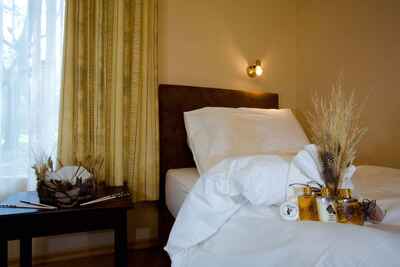About Waterberg Camp
Waterberg Camp is the new name for the government-run restcamp which used to be called Waterberg Plateau Resort.
It was originally known as the Bernabe de la Bat Restcamp, and in many ways the description of 'rest camp' is much more accurate than either the new term 'camp', or the label of 'resort'.
Accommodation
69 rooms
Children
Open
All year
Activities

4WD Safari

Private activities

Self-guided walking
Traveller reviews of Waterberg Camp
62 real, un-edited reviews from Expert Africa's travellers.
Arrived 29 Oct 2019, 2 nights
"Seemed to be popular with large groups"
Overall rating: Excellent
Arrived 8 Sep 2019, 2 nights
"Basic room but good."
Overall rating: Excellent
Arrived 21 Apr 2018, 2 nights
"Waterberg Camp review"
Overall rating: Average
Arrived 28 Jul 2017, 2 nights
"Waterberg Camp review"
Overall rating: Good
Arrived 11 Jul 2017, 1 nights
"Waterberg Camp review"
Overall rating: Good
Arrived 30 Mar 2017, 1 nights
"slightly unloved camp in spectacular setting"
Overall rating: Poor
Arrived 8 Oct 2016, 2 nights
"Pretty good for a Govt camp, excellent game"
Overall rating: Terrible
Arrived 30 Oct 2016, 2 nights
"Lovely setting with Baboon issues"
Overall rating: Average
Arrived 30 Oct 2016, 2 nights
"great walk"
Overall rating: Average
Arrived 25 Sep 2016, 2 nights
"Waterberg Camp review"
Overall rating: Average
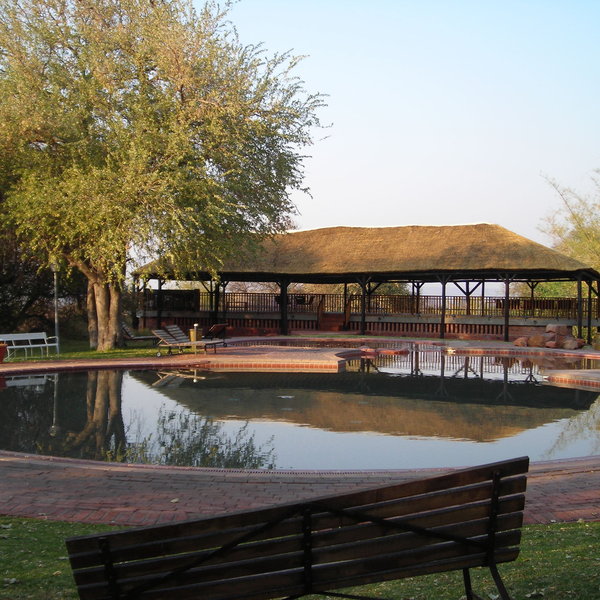
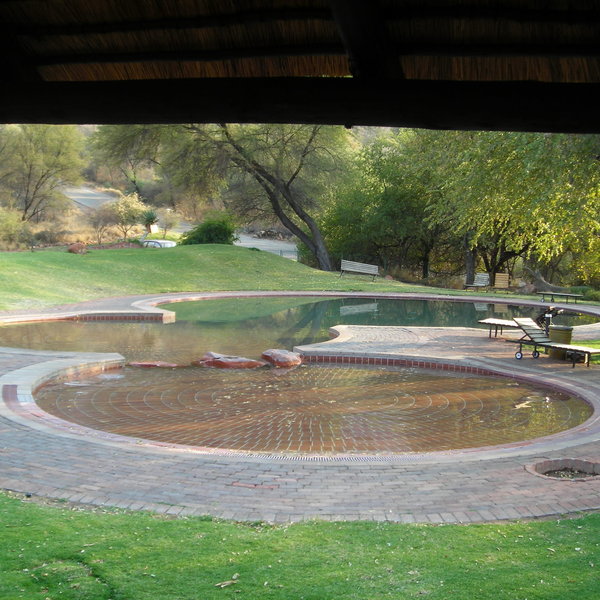
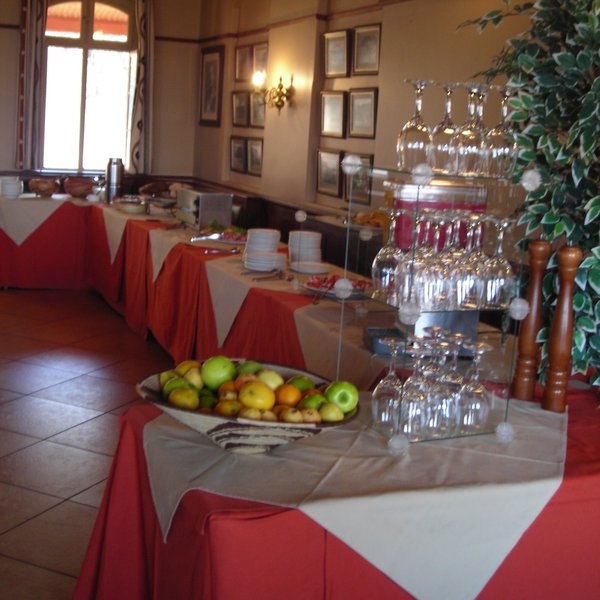
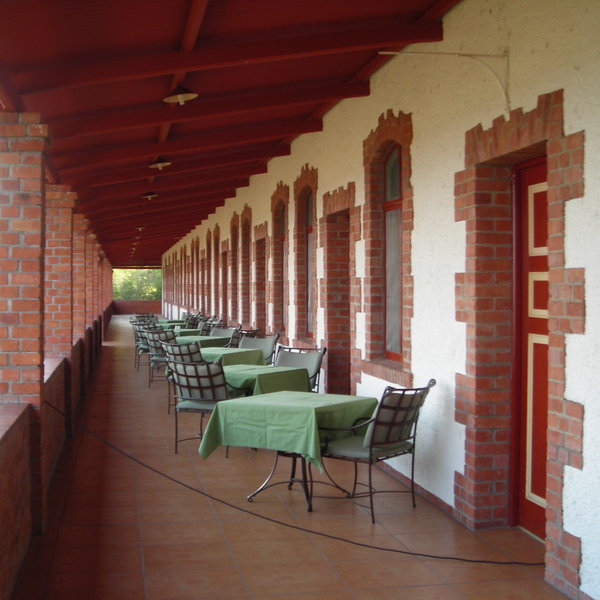
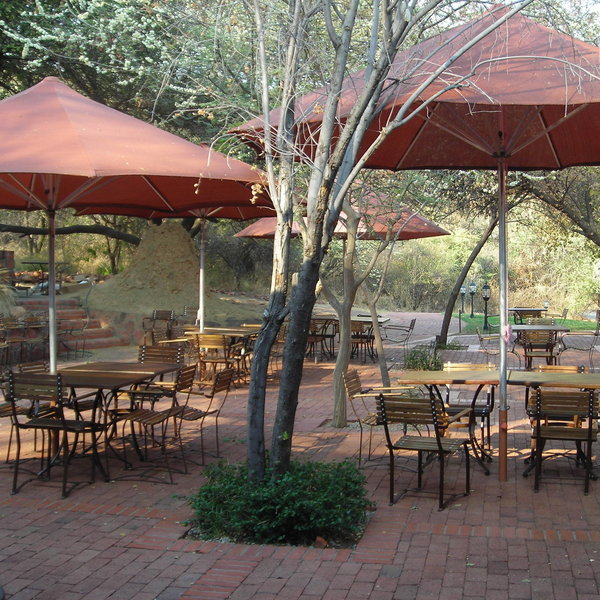
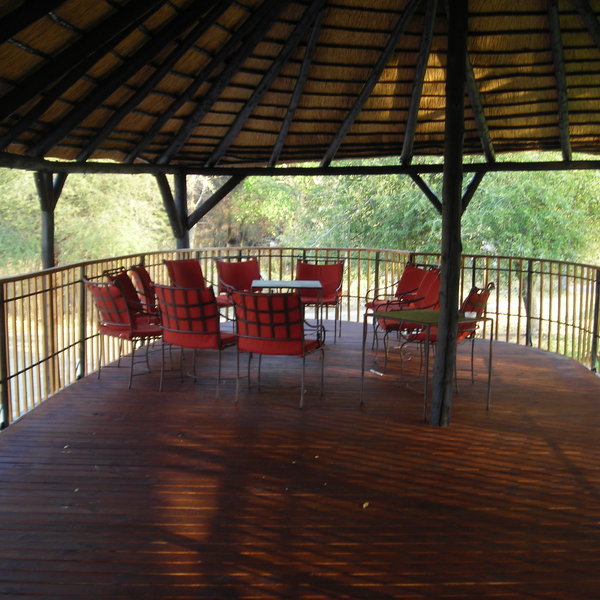
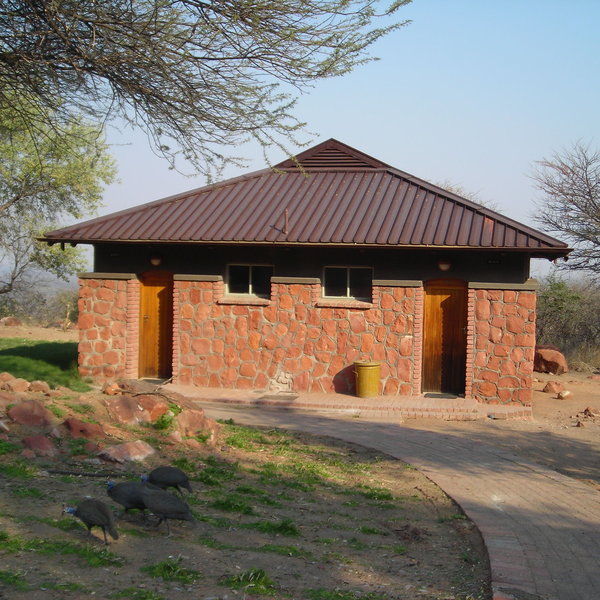
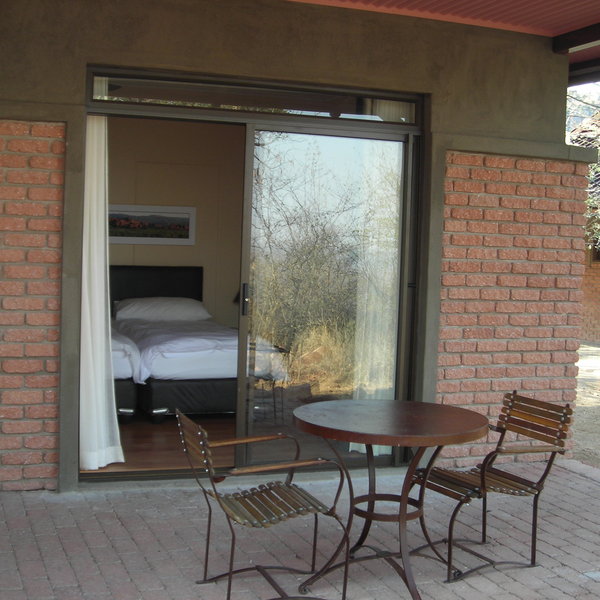
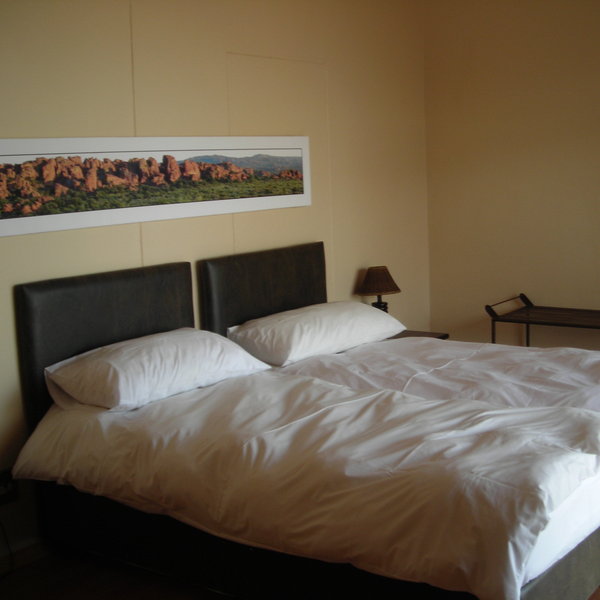
Expert Africa's gallery
When we travel we take lots of photos ourselves to give you a real and un-edited view of the safaris. See our 15 pictures of Waterberg Camp to get the candid view.
View galleryWaterberg Camp: Our full report
Waterberg Camp is the new name for the government-run restcamp which used to be called Waterberg Plateau Resort.
It was originally known as the Bernabe de la Bat Restcamp, and in many ways the description of 'rest camp' is much more accurate than either the new term 'camp', or the label of 'resort'.
The camp nestles, as it has always done, along the base of the cliffs of the Waterberg Plateau, inside the Waterberg Plateau National Park. It is the only place to stay in this national park – unless you're booked onto one of the self-guided treks, in which case there are a few camp-sites on top of the plateau.
Until 2007, the Waterberg Camp was, like most of the restcamps in Namibia's other national parks, pretty basic. Designed for South Africans and local visitors, they'd changed very little in the previous 20-30 years.
However, as part of the 100th anniversary of Etosha National Park, most of the camps and resorts run by Namibia's parastatal 'Namibia Wildlife Resorts' (known almost universally as simply 'NWR') have undergone extensive upgrading, and these include Waterberg Camp – which was one of the first to be changed, in early 2007.
The wildlife at Waterberg is as big a draw here as the scenery, as the high cliffs of Waterberg have long been used to protect its population of rare and endangered animals. White rhino, roan and sable antelope all have good populations here, thriving for some years, whilst they were rare or absent from elsewhere in Namibia. There's a colony of fairly rare Cape vultures here, and a really good mix of birdlife – about 200 species are on record.
Visiting on a short 1-2 night visit, you'll be struck by the number of diminutive steenbok who seem to live around the rest-camp – along with the rather less welcome troops of baboons. Although the game drives can sometimes be productive here … I'd advise visitors to come in search of the scenery – and let any wildlife sightings here be a bonus.
The accommodation here is now much more comfortable here. All the rooms at Waterberg Camp now have ceiling fans, new comfortable twin beds with crisp white bedding and very comfortable pillows. Plus bedside lamps, a wardrobe, a dressing table with a big mirror, one or two comfortable chairs, a tea/coffee station and even a mini fridge – which when we last visited in September 2007 was brand new and working well.
Each room had an en suite bathroom – and although these varied in size, all had quite interesting, innovative designs. We found star-shaped shower heads, wrought iron vanity units with ceramic basins, complementary toiletries and new, soft towels. It's all quite modern and very lovely indeed.
Big sliding doors lead from each room to a private porch area, where there is a wrought iron table and chairs; some of the rooms also have barbeque facilities.
The restaurant & bar at Waterberg Camp are still housed in the old, historic Rasthaus, which was originally built in 1908 and used as a police post for several years. The food and service here are much improved – although Waterberg always did have the reputation as one of Namibia's best restcamps. The open-plan restaurant is quite big with pictures from the early days lined up against the back wall. Big chandeliers hang from the ceiling but other then that the interior is quite simple.
The adjacent bar is open during dinner but closes early.
There is a shop, a swimming pool with newly built pool bar and camping sites. The pool bar is open throughout the day, and serves light meals as well as drinks. A few tables and chairs with big umbrellas surrounded by a few trees have been set up just outside the restaurant where you can relax with a drink after dinner or during the day if the pool bar does not appeal.
Activities at Waterberg vary; there's quite a choice. Daily guided 4WD game drives are offered to the plateau. These use normal safari 4WD vehicles, and are led by a park ranger. (Typically these guys have a wealth of knowledge, but they're not always forthcoming in sharing it unless you interact with them and ask lots of questions!)
There are a number of shorter walking trails around the camp that you can explore by yourself, in a morning or afternoon. If you're relatively fit, then we recommend one that goes up to a look-out point on the top of the plateau.
Activities
4WD Safari
Private activities
Self-guided walking
Families & children
- Attitude towards children
- Children are welcome with their parents
- Property’s age restrictions
- There is no age restriction at Waterberg Camp
- Special activities & services
- No special activities for children but the Restcamp have a swimming pool and short walking trails that kids can enjoy under adult supervision.
- Equipment
- None
- Generally recommended for children
- Yes
- Notes
- None
Food & drink
- Usual board basis
- Bed & Breakfast
- Food quality
- Breakfast is served at Waterberg Camp between 06:30 and 08:30 and consists of a buffet offering cereals, fruit, yoghurt, breads, cheese, meats and hot options. We found it quite strange that you could not order breakfast after 08:30 – it seemed to be a very early time to stop breakfast!
Tea and coffee is available in the restaurant throughout the day.
That said, if you have missed breakfast, then the pool bar opens from 09:00 to 18:00. It has a short menu from which you can order soft drinks, and snacks like burgers, salads and chips. The pool bar is also the only place for lunch.
Dinner is served between 19:00 and 21:00 and you can choose from the à la carte menu. - Dining style
- Individual Tables
- Dining locations
- Indoor and Outdoor Dining
- Further dining info, including room service
- No
- Drinks included
- No drinks are included at Waterberg Camp
Our travellers’ wildlife sightings from Waterberg Camp
Since mid-2018, many of our travellers who stayed at Waterberg Camp have kindly recorded their wildlife sightings and shared them with us. The results are below. Click an animal to see more, and here to see more on our methodology.

67% success

50% success

50% success

50% success

50% success

50% success

33% success

33% success

0% success

0% success

0% success

0% success

0% success
Getting there
- Location
- Waterberg Plateau National Park, Namibia
- Ideal length of stay
- 2 nights
- Accessible by
- Self-drive or Fly-and-Transfer
Communications
- Communications
- There is mobile reception at the Restcamp. There are no phones in the rooms, but the camp has a public pay phone should you need it. You can also purchase phone cards from the small shop. The Restcamp has email and fax facilities but only at reception; it is not for the use of guests.
- TV & radio
- There is no TV or radio in the rooms.
Health & safety
- Malarial protection recommended
- Yes
- Medical care
- The closest doctor or hospital is in Otjiwarongo – perhaps a 90-minute drive.
- Dangerous animals
- Moderate Risk
- Security measures
- There is 24 hour security at the Restcamp but the camp is reasonably safe.
- Fire safety
Useful info
- Disabled access
- Laundry facilities
- There are no facilities for laundry to be done – and no washing powder is provided for you to do your own.
- Money
- Currency exchange is not possible at the Restcamp
- Accepted payment on location
- Visa and Mastercard are accepted at the Restcamp, and no commission is charged
Plan and book your trip with Expert Africa
All of our trips are tailor-made, so we'll always adapt them to suit you. Talk to an Expert and let us plan and arrange your perfect trip.

Talk to an Expert
Call or email us now! We’ll match you with the Specialist in our team who is best suited to help you. Then together we can start planning your trip.

Set up your itinerary
Based on our experience and your ideas, your specialist will create a detailed, costed itinerary. We’ll refine it together, until we have a trip that you’re perfectly happy with.

Prepare for your trip
The same Specialist will make the seamless arrangements for your trip, send you detailed travel documents, and be available to answer any questions before you depart.

Travel with peace of mind
After you set off, you’ll be cared for by our partners in Africa, most of whom have worked with Expert Africa for decades. And if you ever need us urgently, we’re available 24/7.

When you return
We love to learn about your trip, and so will always be grateful if you’ve the time to give feedback to your Specialist when you return.
Waterberg Camp's location
Look closer at the environment and surroundings of Waterberg Camp.
Other lodges in Waterberg Plateau National Park
Alternative places to stay in this same area.
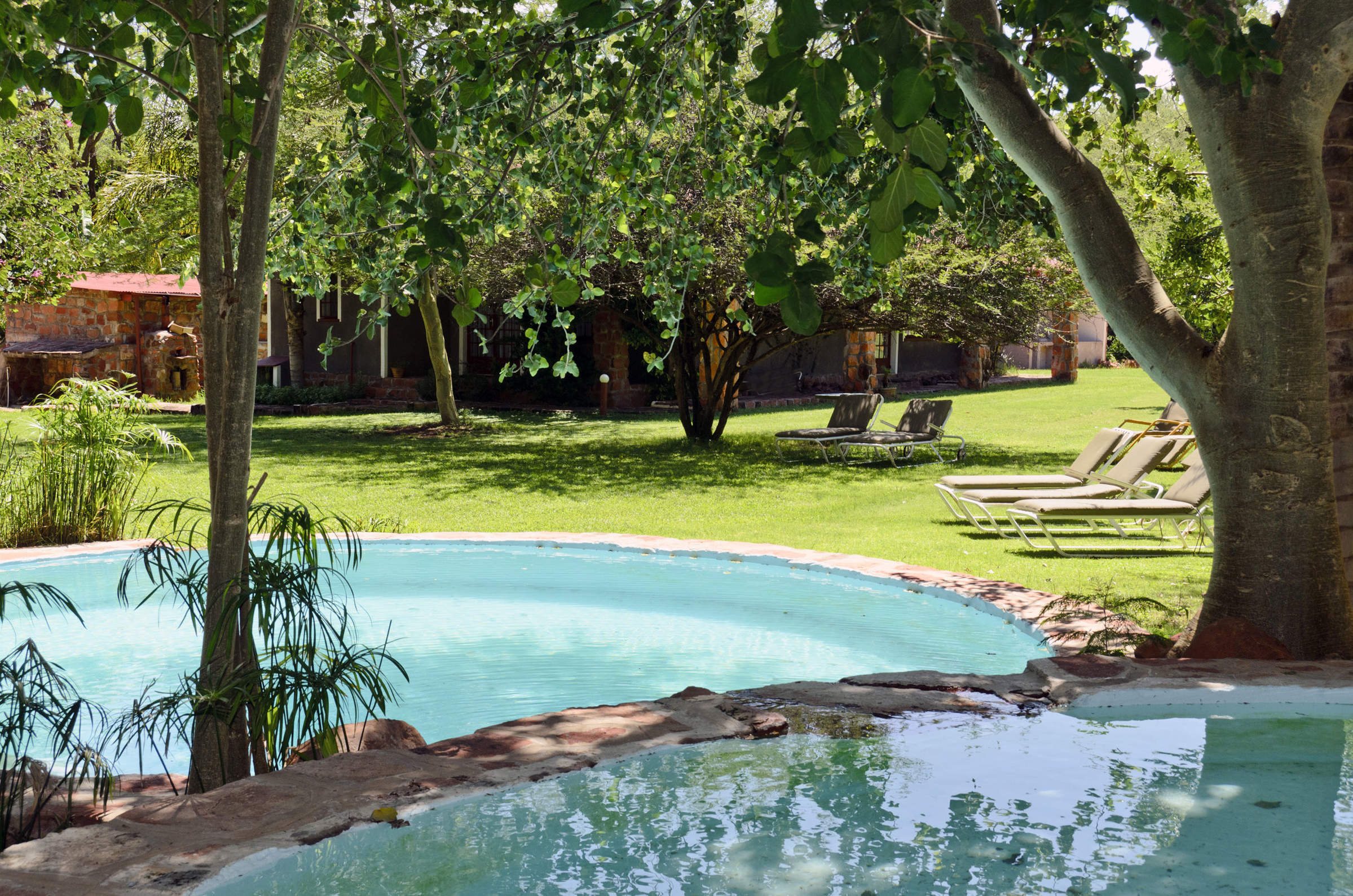
Waterberg Wilderness
Holiday in Namibia's Waterberg Plateau National Park whilst based at the Waterberg Wilderness Lodge.
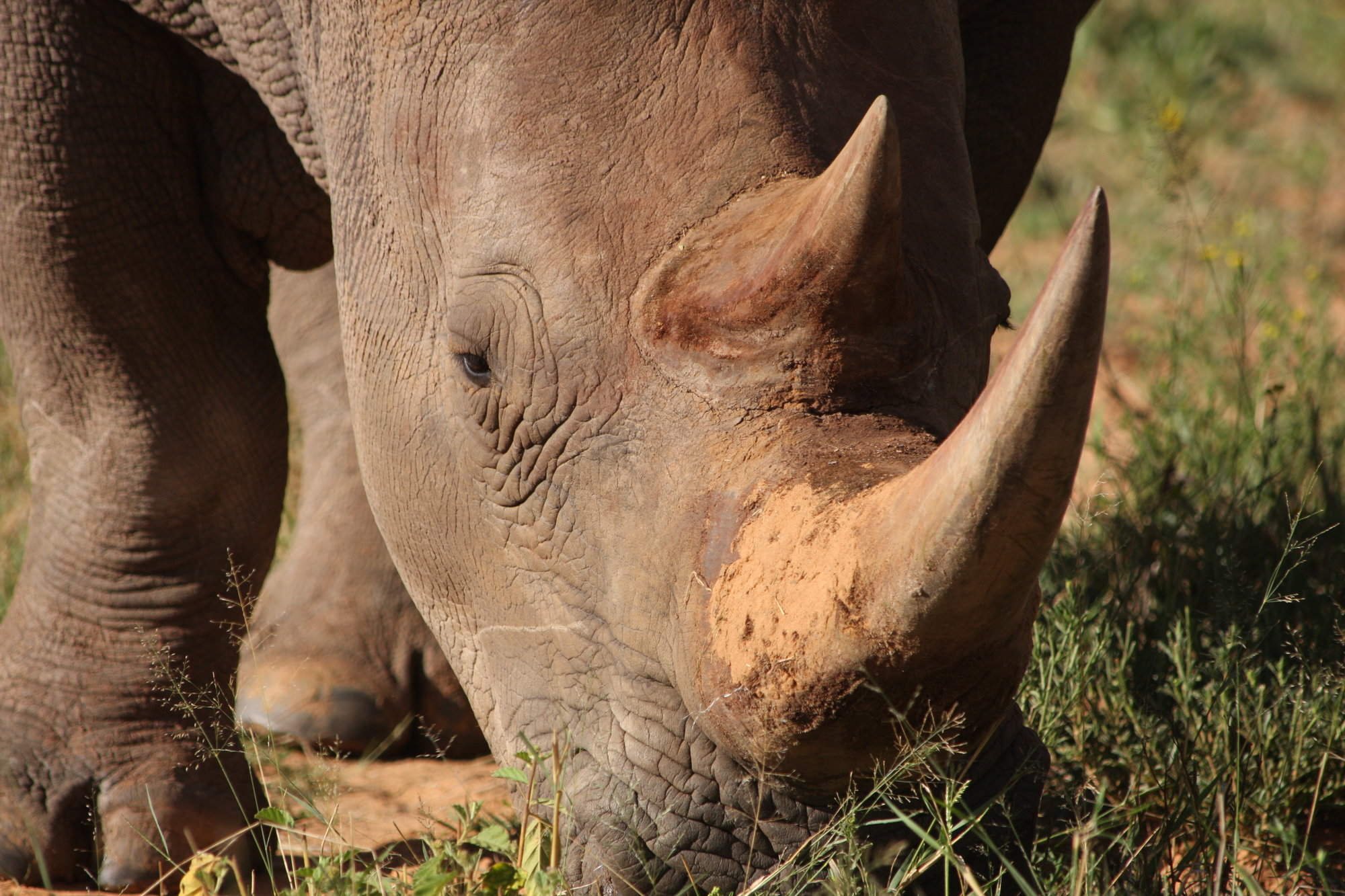
Waterberg Plateau Lodge
Although outside the Waterberg Plateau National Park, Waterberg Plateau Lodge has perhaps the most spectacular views of the lodges in this area.
When to go to Waterberg Plateau National Park
Our month by month guide: What it's like to visit Waterberg Camp in Waterberg Plateau National Park
Jan
Feb
Mar
Apr
May
Jun
Jul
Aug
Sep
Oct
Nov
Dec
Namibia in January
January is at the heart of Namibia’s rainy season. However, as you’d expect from a country dominated by desert and semi-desert environments, the rains are often (but not always) weak and usually quite localised. Some days will be clear, the strong sun raising temperatures to around 30ºC/86ºF; on others humidity and clouds build, sometimes culminating in spectacular thunderstorms. In extreme cases, these generate flash-floods which race down the beds of ephemeral rivers.
Across the country, the greening landscape makes a refreshing change, especially in desert areas. Many birds are in full breeding plumage and migrant species are here in force. In the north, where the rains are more reliable, the abundant water and food allows wildlife to disperse, making it trickier to spot.
- Variable weather: clear, hot & dry, or cloudy & humid with some rain
- Occasional, highly localised thunderstorms
- Many animals with young; birdlife at its most spectacular
- Wildlife dispersed & harder to see, especially in Etosha & the Caprivi
- Very few tourists (apart from the New Year) so rates mostly low
Our view
This is not a great time to visit
Weather in January
Namibia in February
February is the wettest month, but as Namibia is dominated by deserts, the rains are often weak and patchy. The variation in weather across Namibia is significant, too; the central highlands and Caprivi can see some heavy rain. More typically, some February days are clear with a hot, strong sun; others are cooler as cloudy skies build and, sometimes, culminate in short, spectacular thunderstorms. Occasionally these generate flash-floods, bringing ephemeral rivers to life and making travel more challenging.
Across the country, the landscape feels green and alive; insects and smaller animals are more easily seen, and many birds and animals are raising their young. However, small pools in the bush and thicker vegetation can make it hard to spot the wildlife.
- Variable weather: clear, hot & dry or cloudy & humid with some rain
- Occasional localised thunderstorms meander over the landscape
- The bush feels alive; birdlife is at its most spectacular
- Wildlife in Etosha & Caprivi is dispersed & harder to see
- Few tourists, so rates usually at their lowest
Our view
This is not a great time to visit
Weather in February
Namibia in March
March usually sees Namibia’s main rains tailing off, although actual precipitation varies hugely across the country and can be unpredictable from day to day. Many days will be clear, with a strong sun driving temperatures up. On others, clouds will build, and the late afternoon may see a short, spectacular thunderstorm. Such deluges reduce in both frequency and volume as the month progresses.
Across the country, landscapes are often vivid: a “green and pleasant land”. Many birds and animals are finishing raising their young, so smaller animals and insects are in evidence. In the north, where rains are generally heavier, pools in the bush and thicker vegetation can make it difficult to spot larger animals.
- Variable weather: clear, hot & dry or cloudy & humid with some rain
- Afternoon thunderstorms less common as March progresses
- Animals looking sleek and well-fed, after 3–4 months of plenty
- Wildlife in Etosha & Caprivi is dispersed & harder to see
- Few tourists visit during March, so rates often low
Our view
A good time to visit, with pros & cons
Weather in March
Namibia in April
Typically, April is dominated by dry weather; there’s an ever-decreasing chance of rain. Temperatures are now below their peak and continue to fall. Even so, days remain pleasant and warm, but there might be a slight chill in the air at night. The rains usually leave many parts of the country verdant and green, so animals are in fantastic condition – often with fast-growing young in attendance.
With the dust washed out of the atmosphere, photographers make the most of clear air, spectacular landscapes and healthy animals. Stargazers will have clearer night skies as the month progresses. In the game parks of Northern Namibia, water and food remain in plentiful supply, so finding big game can prove trickier than later in the year.
- Becoming drier &, especially at night, also cooler
- Few visitors, except around Easter, so rates remain low
- Wildlife in Etosha & Caprivi remains relatively hard to see
- Migrant birds have started to leave
- Fresh, clean air and often green, verdant landscapes
Our view
A good time to visit, with pros & cons
Weather in April
Namibia in May
By May, Namibia is usually drying out fast as the rains have ended. If they’ve been good, then the land remains green, but wildlife starts to congregate at more permanent water sources. Over much of the country the air quality and clarity can be amazing, making this an ideal month for photography.
Typical days are warm, with crisp, clear mornings and clear blue skies. Evenings are usually cool, and temperatures may dip below 10ºC (50ºF) overnight. Many lodges still charge “low season” prices, although with Namibia’s increasing popularity in recent years, some have started to introduce higher “shoulder season” rates.
May’s good-value rates, increasingly good wildlife sightings, beautiful landscapes and crystal-clear air combine to make this one of our favourite months in Namibia.
- Lovely weather: dry, warm days & cool nights
- The country is drying out although many landscapes remain green
- Fantastic air clarity – ideal for keen photographers
- Visitor numbers are often still low, mirrored by lodge rates
- Wildlife is starting to congregate more around remaining water
Our view
A very good time to visit
Weather in May
Namibia in June
Namibia is dry again. Skies are blue and usually largely cloudless. Days are lovely: warm and dry; nights are cold, sometimes below freezing in the desert. Most swimming pools in Namibia are always outdoors, making them too cold for all except the very dedicated.
Take a warm hat and gloves for game drives, where dawn and dusk will feel particularly chilly. In the north, especially Etosha, wildlife viewing is now into its dry-season pattern, focusing around the waterholes – though the park is still not busy.
Photographers come for superb air clarity, with minimal dust or smoke in the air. Historically, June rates have been low. However, with Namibia’s increasing popularity many lodges now count it amongst their “high-season” months, and request higher prices.
- Clear, bright days with blue skies; cold nights, mornings & evenings
- Great air quality, especially welcome for photographers
- “Shoulder season” for some lodges: lodge rates moderate
- Wildlife gravitates to waterholes, making game-viewing productive
- Some greenery in the landscape, depending on the last rains
Our view
A very good time to visit
Weather in June
Namibia in July
Reliably warm daytime temperatures (upwards of 20ºC/70ºF) and good wildlife sightings make this a popular month to visit Namibia. Rain would be very unusual indeed and clear skies make for great photographs. Once the sun sets, though, temperatures cool rapidly bringing cold nights that may dip below freezing in the desert. Be prepared: dress in layers and expect early-morning and late-afternoon drives, and anywhere coastal, to be cold.
As the land dries and vegetation shrivels, game congregates beside drinking water: Etosha’s waterholes are busy with animals. Across the country, lodges charge “high season” rates; many are fully booked a year or more in advance, especially during European school holidays (from the latter half of July to late August).
- Dry days, warm in the sun, with crisp, cold nights
- Cloudless skies: July is usually superb for stargazing
- The beginning of European school holidays so more families travelling
- Peak season: so high rates and many lodges fully booked far in advance
- A fantastic time of year for wildlife watching, particularly in Etosha
Our view
A very good time to visit
Weather in July
Namibia in August
August is the height of Namibia’s “winter”. Expect cloudless skies and plenty of warm sun in the day, but nights down to freezing in the desert. Dress in layers and bring warm clothes (including hats and gloves) for chilly starts and evenings. Only the hardiest even contemplate using outdoor pools.
It’s 3–4 months since any rain, so the land is dust-dry and much vegetation is golden brown. Many landscapes appear sparse and harsh. Wildlife congregates around available water sources, helping to guarantee good animal sightings.
Namibia is never really “busy” by the standards of Europe or the USA, but August is the most popular time to visit, especially for families. Book early (over a year in advance) if you want to stay at the best lodges.
- Dry days, warm in the sun; cold mornings, evenings & nights
- Cloudless skies in the day; spectacular stars at night
- Busy by Namibian standards: family rooms in particular demand
- Peak season: so high rates and many lodges fully booked far in advance
- A fantastic time of year for wildlife watching, particularly in Etosha
Our view
Fantastic: the very best time to visit
Weather in August
Namibia in September
September is a month of blue, cloudless skies and fantastic wildlife viewing. Rain is almost unheard of. As the month progresses, the days and nights get warmer. In some areas, daily maximums hit around the low 30s Celsius, although low humidity ensures this feels comfortable. The contrast makes the nights seem very cold. The air is becoming dustier, occasionally augmented by smoke from fires – so becoming hazy for photographic purists.
In the national parks, animals congregate around remaining water sources – making September one of the best months for game viewing. Hence it’s one of Namibia’s most popular months for visitors: a “high season” month that is often the time of choice for safari aficionados.
- One of the best months for wildlife viewing
- Warm days & cold nights, with temperatures rising during the month
- Many plants have faded from green to golden brown
- Air can be hazy – with dust & sometimes smoke
- High season rates; many lodges & camps are full 9 months in advance.
Our view
Fantastic: the very best time to visit
Weather in September
Namibia in October
Namibia is usually at its hottest and driest in October. Temperatures build as the month progresses; towards the end, daily highs may exceed 40ºC/100ºF, though with humidity close to zero, even this rarely feels oppressive.
In exceptional years, isolated rain showers may fall in late October. More usually, the end of the dry season sees wildlife watching at its best, particularly in Etosha. The place feels like a desert as spectacular herds of thirsty animals gather around the available water. October is popular amongst wildlife enthusiasts and commands peak-season prices, even if dust and smoke may make the air hazy, challenging photographers. Visitor numbers can fade towards the end of the month, allowing a window for last-minute bookings.
- Probably the most spectacular month for wildlife-viewing in Etosha
- Hot and dry: much of the country feels like a desert
- The air can be hazy with dust & smoke
- It’s peak time to visit, so expect high season rates
- Lodges & camps are full, especially early in October
Our view
A very good time to visit
Weather in October
Namibia in November
November is always a bit unpredictable: sometimes dry and hot; sometimes cloudier and cooler. Typically, mornings are hot and cloudless and clouds appear in the afternoon. Humidity builds and eventually breaks, resulting in spectacular thunderstorms that bring convection rainfall in late afternoons. Such storms are typically sparsely distributed and highly local – being completely absent from desert areas, for example. Places that do get good rain will flush green, with a tangible feeling of new life softening the landscapes. Many mammals give birth to their young.
Once any rains come, wildlife dissipates in search of food, and game viewing in Etosha becomes harder. Conversely, this is a great time for birdwatchers, with migrant species in breeding plumage.
- A very interesting, variable month, depending on the rains
- With rains come an amazing explosion of both vegetation & new life
- Wildlife viewing better in Damaraland than Etosha if it has rained
- Shoulder season: mid-range rates offer great value
- Away from the Namib, showers are more likely later in the month
Our view
A good time to visit, with pros & cons
Weather in November
Namibia in December
December is the first “proper” month of Namibia’s rainy season, and one of its hottest. Clear mornings give way to building clouds and, with luck, the occasional short, spectacular thunderstorm: refreshing and cleansing. These are often highly localised and generally warmly welcomed: most Namibians love rain!
Rains clear the air of dust. Even relatively short showers enable plant life to erupt, carpeting this thirstland in green and providing food for the young animals which abound. Animals disperse widely, which can make game viewing challenging. Many birds are breeding and so sporting their most colourful plumage.
Christmas and the New Year fall within local “summer holidays” – so places to stay can be surprisingly busy, especially in and around coastal towns, where temperatures are cooler.
- Hot and humid; sometimes refreshed by cooling showers
- Landscapes flushed green if/where there has been rain
- A tangible life and energy amidst this often green & pleasant land
- Very photogenic: blooming deserts amidst crystal-clear air
- Best time for birdwatchers; larger animals harder to spot
Our view
This is not a great time to visit
Weather in December

Looking for inspiration on where to travel next?
Visit our trip chooser to explore your options and find inspiration for your perfect African adventure
Inspire me